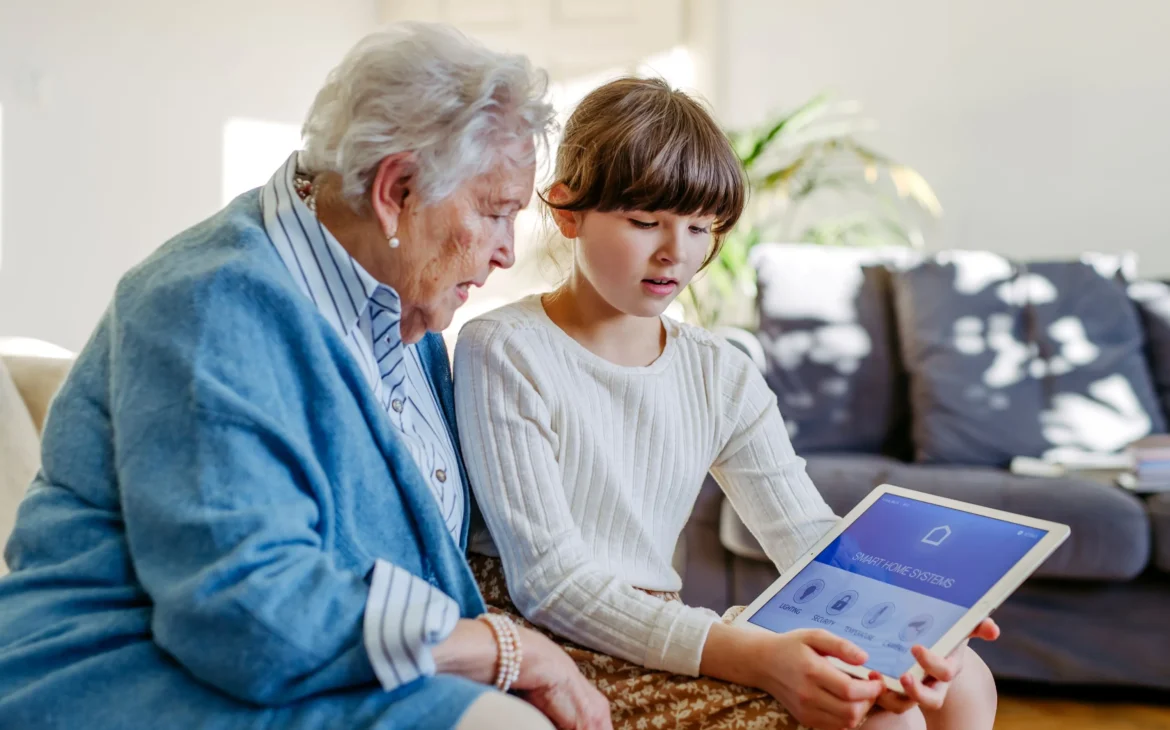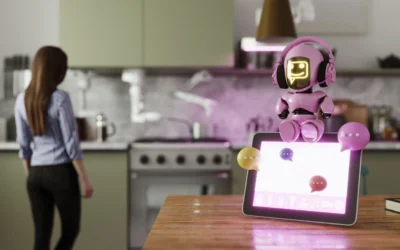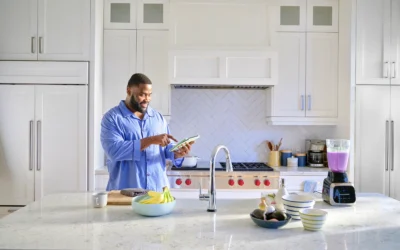As the world’s population continues to age, many families often find themselves navigating the challenges of caring for elderly loved ones. When an aging parent begins showing signs of forgetfulness or reduced mobility, it can be difficult to balance ensuring their safety while respecting their independence. This delicate balance is no small task for many caregivers. Fortunately, smart home devices are stepping in to transform elder care. From motion-activated lights that reduce nighttime falls to smart speakers that allow seniors to call for help hands-free, these tools can enhance safety and ease daily life.
By promoting independence and offering peace of mind, smart technology fosters stronger connections between families and healthcare providers. Installing fall detection sensors and medication dispensers, for example, can help seniors stay in their homes longer. These technologies are more than conveniences—they’re lifelines for families striving to provide compassionate, practical care.
Feel free to jump to the sections that interest you the most:
- Enhancing daily living with smart home devicdes
- Keeping families connected
- Extending independence for seniors
- The role of traditional safety services alongside smart technology
- Overcoming barriers to adoption
- Tips for choosing the right smart home devices
- Combining innovation and tradition for elder care
Enhancing daily living with smart home devices
Living in today’s digital world offers unprecedented opportunities to overcome the challenges of aging. Mobility issues and cognitive changes can make everyday tasks feel daunting, but smart home technology provides solutions that weren’t possible before. These innovative devices transform homes into supportive environments, enhancing both safety and convenience. Seniors can now enjoy the benefits of automated systems, like motion-activated lights that prevent falls and voice-controlled devices that simplify routine tasks. By integrating technology into their daily lives, older adults gain greater independence and peace of mind, all while staying connected to the digital age. This powerful blend of technology and care creates a new standard for senior living, turning potential struggles into manageable, even empowering, experiences.
Key smart devices for daily living:
- Smart thermostats: These devices learn preferences and automatically adjust home temperatures, ensuring comfort without manual adjustments.
- Automated lighting systems: Motion-activated lights reduce the risk of falls during nighttime trips to the bathroom.
- Smart appliances: Stoves and ovens with auto-shutoff features prevent potential hazards.
- Voice-activated assistants: Seniors can set reminders, play music, or ask for weather updates using simple voice commands.
- Door and window sensors: These notify caregivers when doors or windows are left open, adding an extra layer of security.
These devices not only simplify daily routines but also provide peace of mind for both seniors and their families. Many smart home systems allow seniors to control their environment directly from a mobile device, eliminating the need to get up—a significant benefit for those with mobility challenges. For instance, they can adjust lighting, temperature, or lock doors with just a few taps on their smartphone. Additionally, family members who live in a different home can remotely manage these settings, helping ensure their loved ones are safe and comfortable even from afar. This level of control and connectivity can enhance independence while maintaining a safety net of support.

Keeping families connected
One of the greatest concerns for adult children caring for aging parents is the ability to stay connected, especially when living far apart. Smart home technology bridges this gap, enabling real-time updates, meaningful interactions, and peace of mind. With tools like video cameras and activity trackers, families can easily check for signs of activity—whether it’s seeing movement around the house or confirming that their loved one has taken their medication. This reassurance is invaluable, particularly for those juggling long-distance caregiving. These devices not only enable visual check-ins but also allow families to stay informed about their loved one’s routine, fostering a sense of connection and trust. By offering a window into their daily lives, smart home technology strengthens relationships while enhancing safety and care.
Ways smart devices connect families:
- Video cameras and smart displays: Video cameras allow families to check in visually, ensuring their loved ones are safe.
- Smart speakers with calling features: Seniors can use devices like Amazon Echo to call family members in case of an emergency. It’s important to note that not all smart speakers are capable of connecting directly to 911 services, so families should confirm this feature before relying on it for emergencies.
- Activity trackers: These monitor daily movements, sending notifications to family members if unusual patterns are detected. Some advanced trackers also measure vital signs, such as heart rate and oxygen levels, providing additional insights into a loved one’s well-being. These features allow families to catch potential health concerns early and ensure timely intervention, adding another layer of safety and reassurance.
- Health monitoring systems: Blood pressure monitors or glucose tracking systems share results directly with caregivers. For individuals managing diabetes with devices like the Medtronic MiniMed Pump, the CareLink Connect app offers additional support by notifying loved ones about key health metrics. Family members can receive real-time updates on glucose levels and pump status directly to their mobile devices, providing peace of mind and enabling timely interventions if needed.
- Shared apps and dashboards: Family members can access centralized apps to view updates and communicate seamlessly.
These tools offer more than just oversight—they foster a strong relationship by helping ensure that aging parents remain a part of family life, even from afar.
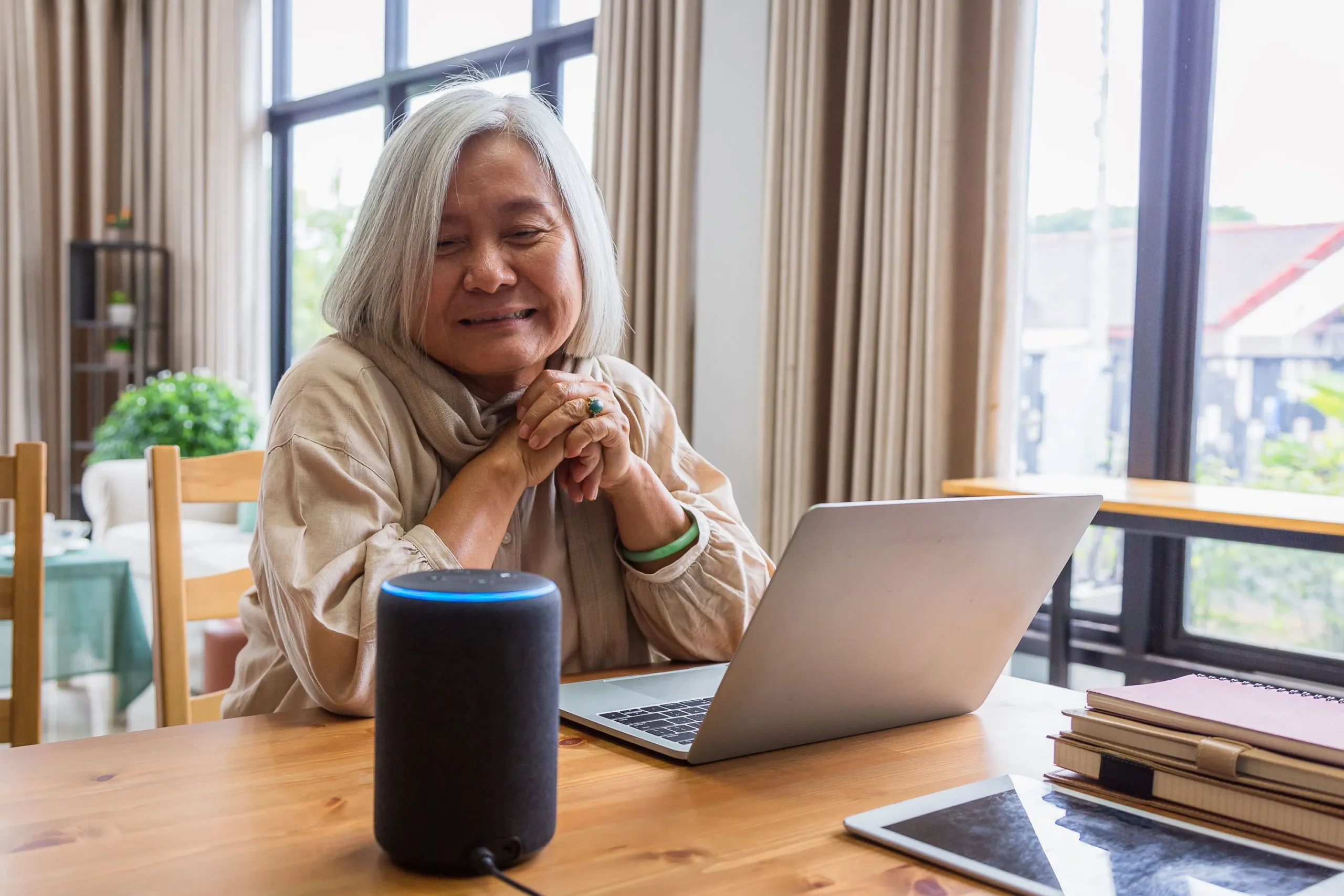
Extending independence for seniors
One of the most significant advantages of smart home devices is their ability to extend the time seniors can live independently in their own homes. Many elderly individuals are reluctant to move into nursing homes or senior living communities, often because they are deeply attached to their homes or fear the changes such a move would bring. Smart home technology can empower these seniors to stay in familiar surroundings longer than they otherwise could. By addressing safety and accessibility needs, these devices provide a sense of control and comfort, enabling seniors to maintain their routines and independence while easing the concerns of their families.
Devices that promote independence:
- Smart locks and doorbells: These enable seniors to control home access and monitor visitors without needing to open the door.
- Fall detection sensors: Devices like fall alert pendants or floor mats can detect and report accidents instantly.
- Medication dispensers: Automated pill dispensers ensure that medication schedules are followed correctly.
- Voice-controlled lights and appliances: Seniors with mobility issues can control their home environment with simple voice commands.
- Home automation hubs: Platforms like Google Home or Apple HomeKit integrate multiple devices, simplifying daily life.
By empowering seniors to manage their homes with ease, these technologies help delay the need for assisted living, offering both emotional and financial benefits.
The role of traditional safety services alongside smart technology
While smart home devices have revolutionized elder care, traditional safety services still play a vital role. For example, during power outages caused by storms, smart devices relying on electricity or WiFi may become temporarily unusable. Combining these services creates a comprehensive support system for seniors, helping ensure critical safety measures remain in place no matter the circumstances.
Why traditional safety services remain essential:
- Power outage scenarios: Devices like Life Alert operate independently of home electricity or WiFi.
- Backup communication: In emergencies where tech fails, wearable pendants can provide reliable lifelines.
- Redundancy for critical alerts: Having multiple systems help ensure no call for help goes unanswered.
- Simplicity for tech-averse seniors: Not all elderly individuals are comfortable with advanced gadgets, making simpler systems essential.
- 24/7 monitoring: Some traditional systems provide round-the-clock human support that technology cannot replace.
Blending smart devices with established services help ensure that seniors remain safe under any circumstances.
Overcoming barriers to adoption
Despite the benefits, some families hesitate to adopt smart home technology for elder care. Common concerns include costs, technological complexity, and privacy issues. Addressing these barriers is crucial to maximizing the impact of these tools.
Solutions to common challenges:
- Technological comfort:
- Choose devices with intuitive interfaces and robust customer support.
- Offer training sessions for seniors to build confidence.
- Cost considerations:
- Highlight affordable options and government assistance programs.
- Look for devices offering long-term savings, such as energy-efficient systems.
- Privacy concerns:
- Opt for systems with advanced encryption and customizable permissions.
- Be transparent with seniors about what data is collected and how it’s used.
With these strategies, families can navigate potential hurdles and make informed decisions about integrating smart technology into their elder care plans.
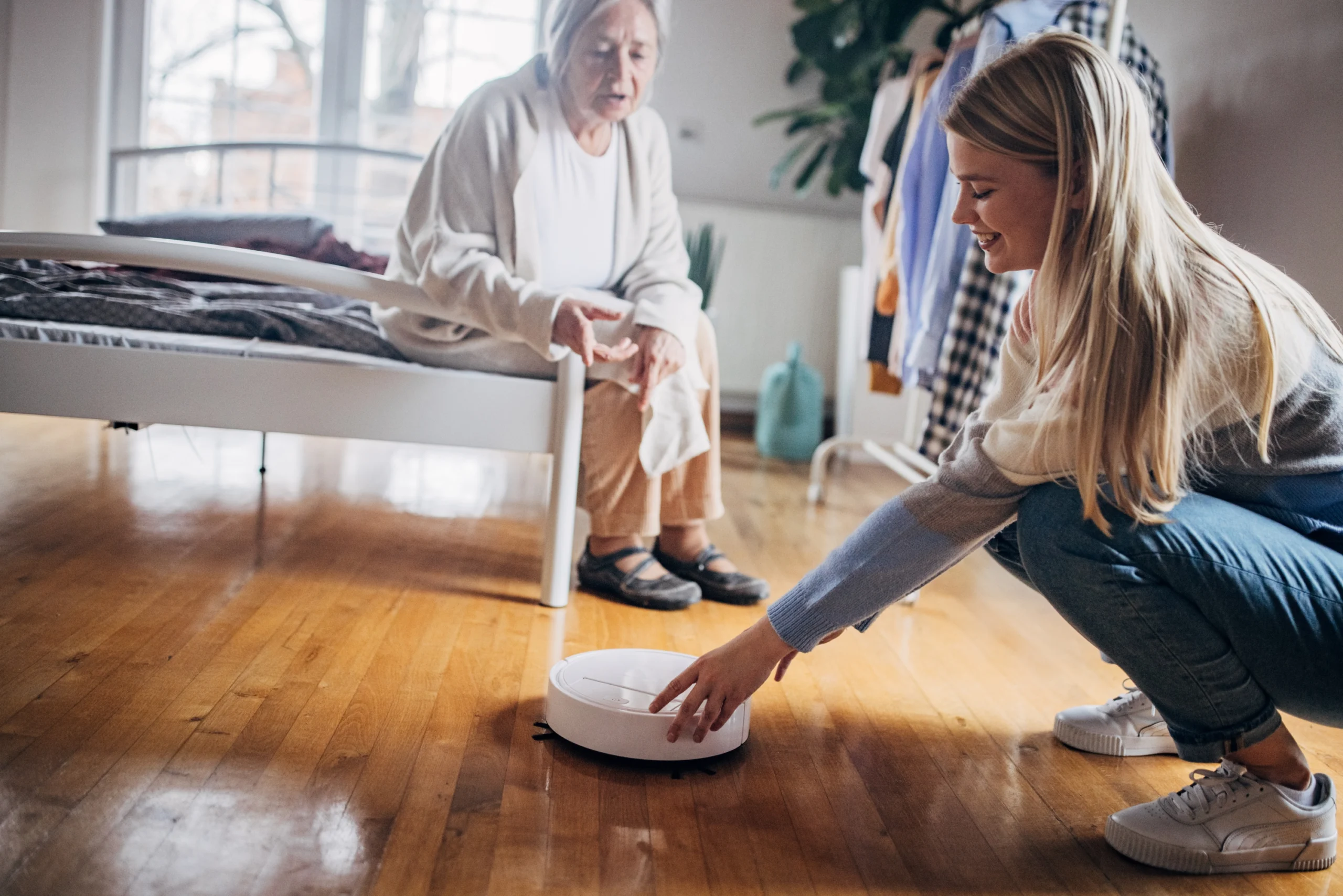
Combining innovation and tradition for elder care
Smart home devices are revolutionizing the way we care for aging loved ones. From enhancing safety and independence to strengthening connections between families and healthcare providers, these technologies provide great benefits. However, it’s crucial to recognize that traditional safety services, such as Life Alert or Alert pendants, should be used alongside smart devices to help ensure comprehensive coverage. These systems serve as reliable backups, particularly during power outages or WiFi disruptions. By combining traditional and modern solutions, families can create a robust safety net that helps seniors thrive in their own homes.
Additionally, fast and reliable internet is essential to power these devices seamlessly. Quantum Fiber Internet® offers the reliability needed to keep smart home systems running seamlessly. With speeds up to 200 Mbps, up to 500 Mbps, or up to 940 Mbps, and multi-gig options of up to 2 Gig, up to 3 Gig, and even up to 8 Gig in select locations, Quantum Fiber provides options tailored to various needs. Most plans also include symmetrical speeds, helping ensure smooth and consistent performance for both uploads and downloads. This service plays a key role in supporting the technology that helps seniors live safely and independently. Check if you qualify for Quantum Fiber Internet and experience the peace of mind that comes with innovative technology and a dependable network. Together, these tools stand out as beacons of hope, offering balance, safety, and independence in elder care.
Content Disclaimer – All content is for informational purposes only, may require user’s additional research, and is provided “as is” without any warranty, condition of any kind (express or implied), or guarantee of outcome or results. Use of this content is at user’s own risk. All third-party company and product or service names referenced in this article are for identification purposes only and do not imply endorsement or affiliation with Quantum Fiber. If Quantum Fiber products and offerings are referenced in the content, they are accurate as of the date of issue. Quantum Fiber services are not available everywhere. Quantum Fiber service usually means 100% fiber-optic network to your location but, in limited circumstances, Quantum Fiber may need to deploy alternative technologies coupled with a non-fiber connection from a certain point (usually the curb) to your location in order to provide the advertised download speeds. ©2025 Q Fiber, LLC. All Rights Reserved. Quantum, Quantum Fiber and Quantum Fiber Internet are trademarks of Quantum Wireless LLC and used under license to Q Fiber, LLC.


